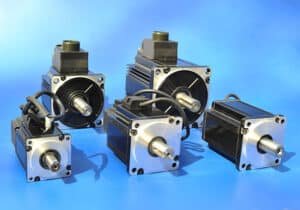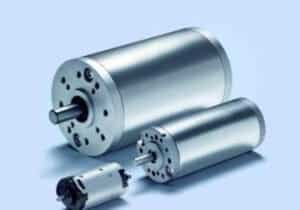Brushless motor and brushed motor, has been a lot of friends like to talk about the topic, in addition to the function, characteristics of these common comparisons, the winding method is also often mentioned, then brushless motor and brushed motor winding the same way? What are the differences and differences? The following Vacuz give you an introduction to it!

Brush/Brushless Motor
Brushless motors and brushed motors are wound in different ways, the following is a detailed comparison of the winding methods of these two motors:
First, the difference in principle
1. Brushed motor: mechanical commutation is used, the magnetic poles are stationary and the coil rotates. Through the carbon brushes and commutator, the direction of the current is changed alternately during the rotation of the coil, thus driving the motor to rotate.
2. Brushless motor: electronic commutation is adopted, the coil is not moving and the magnetic poles are rotating. A group of electronic devices is used to sense the position of the magnetic poles of the permanent magnet through Hall elements, and switch the direction of the current in the coil in time to produce the correct magnetic force to drive the motor.
II. Difference of winding methods
1. Brush motor winding method:
Parallel winding method: connect the two ends of each coil to the brushes separately, and then connect all the brushes to a DC power supply. This method is simple, but the motor efficiency is low.
Series winding method: Connect one end of each coil to the other end of the next coil to form a series circuit, then connect the voltage between the two ends to the brushes. This method has higher current density and higher efficiency, but the winding is more complicated.
2. Brushless motor winding method:
Star winding (Y-winding): A section of each coil is connected to the two ports of the neighboring coils to form a star-shaped structure. The wire length and voltage used for each coil are the same, so the motor runs stably. It is usually used for motors with fewer coils per phase.
Triangular winding (△ winding): One end of each coil is connected to the other end of the neighboring coil, forming a triangular structure. The voltage of each coil is different, and voltage imbalance may occur during high-speed operation. It is suitable for motors with more coils per phase.
Wave winding (λ-type winding): The ends of each coil are connected to the two ports of the neighboring coils to form a wave structure. In order to ensure current balance, a complex method is required to calculate the voltage of each coil. Winding is difficult, but it improves the efficiency and output torque of the motor. It is suitable for motors with more coils per phase.
III. Features and differences
Brushed motor: simple structure, low manufacturing cost. Carbon brushes are easy to wear and need to be replaced periodically. Carbon brushes and coil terminals are turned on and off alternately, and the sparks generated will interfere with electronic equipment.
Brushless motor: electronic commutation, no carbon brush wear problem, long life. High efficiency and high output torque. Suitable for high-speed and high-precision control occasions.

Nuolatinės srovės bešepetėliniai varikliai
Are brushless motors and brushed motors winding in the same way? What are the differences and differences? Vacuz above has done a simple description and explanation, I hope these tips can help you!
El. paštas: sales@vacuz.com





